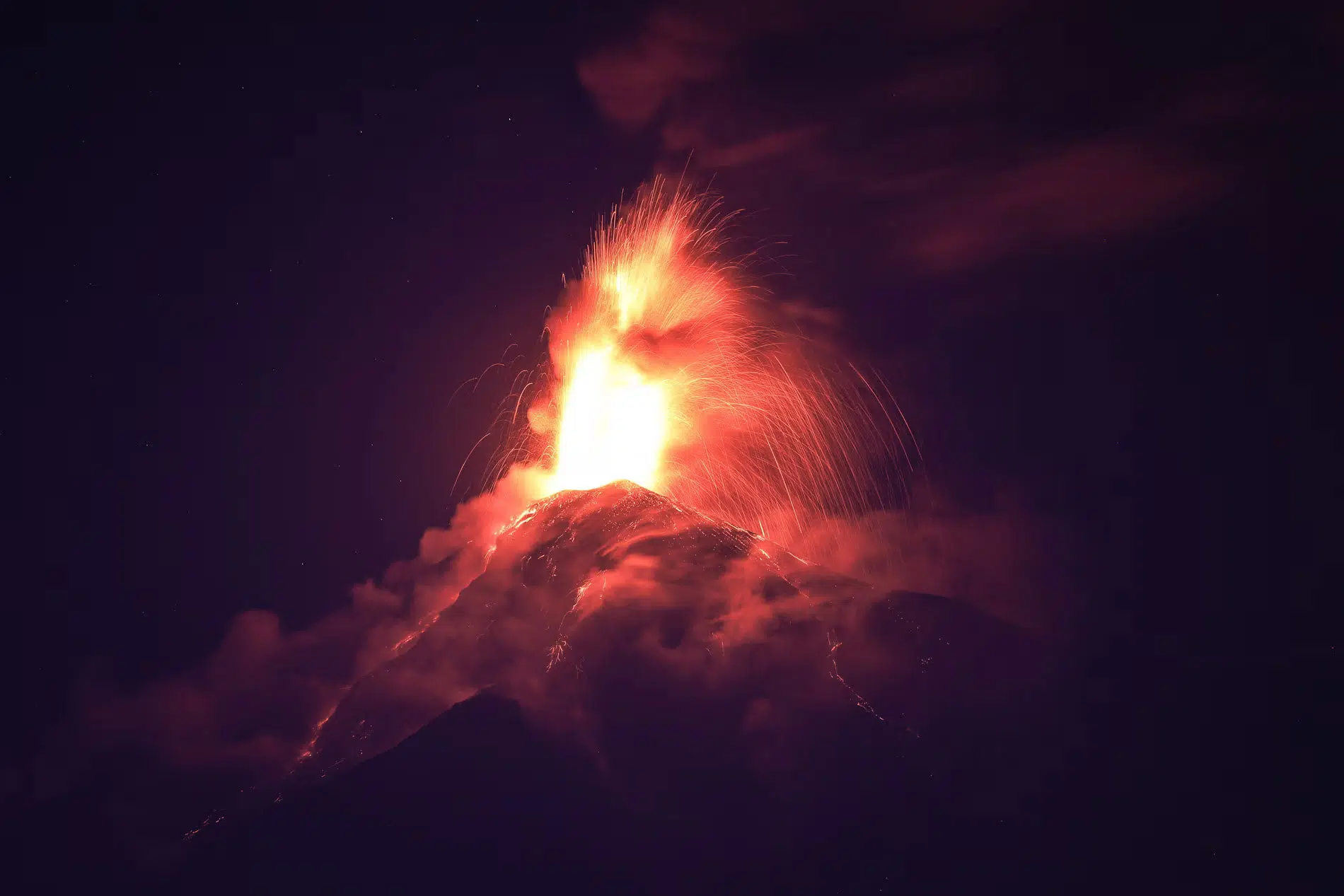On March 10, 2025, Guatemalan authorities were forced to evacuate around a thousand residents as the Fuego volcano, one of Central America’s most active volcanoes, erupted dramatically, spewing lava, rocks, and ash. The eruption led to widespread fear and a large-scale response to protect the lives of residents in nearby communities.
Fuego Volcano: A Constant Threat
Located just 35 kilometers (22 miles) from Guatemala City’s capital, the Fuego volcano stands as one of the most active and dangerous volcanoes in Central America. Rising to an impressive height of 3,763 meters (12,346 feet), Fuego has a history of frequent eruptions, often causing evacuations and damaging nearby settlements.
For years, the volcano has been a source of concern for both local residents and government authorities. Despite continuous monitoring and preparedness efforts, the volcano’s explosive eruptions can occur with little warning, making it a constant risk for those living in nearby areas.
The Eruption: Lava, Ash, and Rocks
The eruption that began on March 9, 2025, saw a significant increase in volcanic activity, including the spewing of lava, ash, and large rocks from the volcano’s crater. As the eruption intensified, residents of nearby towns such as El Porvenir and Las Lajitas found themselves in immediate danger. Fearing for their safety, authorities began implementing evacuation procedures to move people to safer locations.
The rumblings of the volcano were felt for miles, with residents describing the sound as deafening. Many evacuees described the eruption as terrifying, with the ash and lava making it difficult to breathe and see. Families grabbed what belongings they could and fled to shelters set up by local authorities, hoping for a safe refuge away from the volcanic activity.
Evacuation Efforts
Juan Laureano, a spokesperson for Guatemala’s disaster coordination agency, Conred, confirmed that more than 900 people from the village of El Porvenir were evacuated, including 125 families. These evacuees were transported by buses to a town hall that had been converted into a temporary shelter.
Authorities also focused on evacuating other areas within the volcanic danger zone, prioritizing families with young children, the elderly, and those living in the most vulnerable regions. The evacuations were conducted swiftly, but the urgency and emotional stress placed on the residents were undeniable.
In total, more than 1,000 people were moved to safety, with buses making multiple trips to ensure that as many people as possible could be relocated. Many evacuees carried their essential belongings, such as clothing, food, and important documents, as they were unsure when they would be allowed to return home.
The Aftermath: Fuego Volcano’s Deadly History
This latest eruption of the Fuego volcano is a stark reminder of the dangers posed by the active volcano. In 2018, Fuego erupted catastrophically, killing 215 people and leaving many others missing. The eruption sent rivers of lava down the volcano’s slopes, devastating the village of San Miguel Los Lotes and surrounding areas. The destruction caused by that eruption was immense, and it took years for many communities to recover.
Another eruption in 2023 forced the evacuation of around 1,200 people, further highlighting the constant threat Fuego poses to nearby communities. The government has repeatedly emphasized the importance of preparedness, including the monitoring of volcanic activity and the timely evacuation of at-risk residents.
The Role of Authorities and Emergency Services
Guatemala’s disaster management agency, Conred, plays a crucial role in coordinating evacuation efforts during natural disasters like volcanic eruptions. The agency issues alerts when volcanic activity reaches dangerous levels, prompting local officials to take immediate action.
On March 9, 2025, Conred issued a level of alert indicating an increased risk of eruption, which led to the evacuation orders. Emergency services worked around the clock to ensure the safety of residents in danger zones, with the assistance of local police, fire departments, and military units.
Authorities also suspended local school activities and closed roads in the affected areas to prevent further risk to the public. The main road linking Guatemala’s southern regions to the UNESCO World Heritage site of Antigua was closed temporarily due to the eruption, further emphasizing the widespread impact of the volcanic activity.
Volcanic Eruption Monitoring and Preparedness
In addition to emergency evacuations, authorities continue to monitor the Fuego volcano’s activity using advanced technology, including seismic activity sensors, gas monitoring, and satellite imagery. The data collected from these monitoring systems helps predict eruptions and assess the level of threat to nearby communities.
Preparedness efforts are critical in reducing the potential loss of life during such eruptions. Local authorities provide public education campaigns to teach residents about the dangers of living near active volcanoes and the importance of evacuating promptly when necessary. The lessons learned from past eruptions, such as the 2018 disaster, have helped refine evacuation procedures and response strategies.
The Importance of Volcanic Disaster Preparedness in Central America
Central America is home to several active volcanoes, many of which pose significant threats to local populations. In addition to Fuego, other volcanoes in the region, such as Pacaya in Guatemala and Arenal in Costa Rica, are also active and capable of erupting at any time.
As a result, disaster preparedness has become a key focus for governments and local authorities throughout the region. Investment in early warning systems, evacuation infrastructure, and community education can help mitigate the impact of future eruptions and save lives.
Conclusion: A Nation on High Alert
As Guatemala continues to monitor the situation with the Fuego volcano, residents of nearby communities remain on high alert. The latest eruption serves as a reminder of the potential dangers posed by the region’s active volcanoes. While authorities are doing everything in their power to keep people safe, the unpredictability of volcanic activity makes ongoing vigilance essential.
For now, the focus is on ensuring the safety of the evacuees and providing assistance to those whose lives have been disrupted by the eruption. As Fuego volcano remains active, Guatemala will continue to respond with the utmost urgency to protect its citizens and minimize the risks of future disasters.
YAllA TV – www.yallatv.ae





